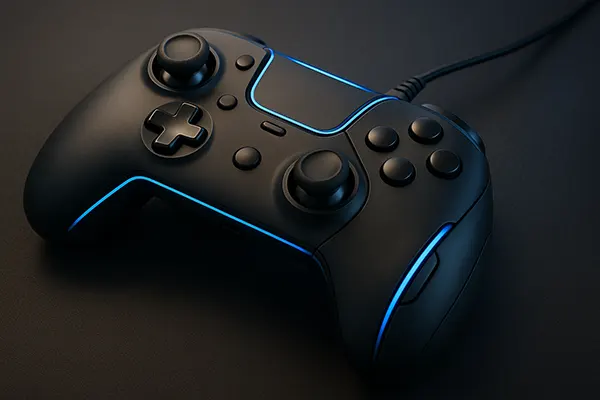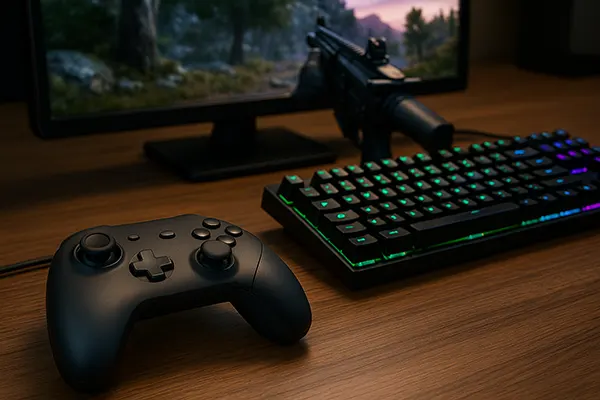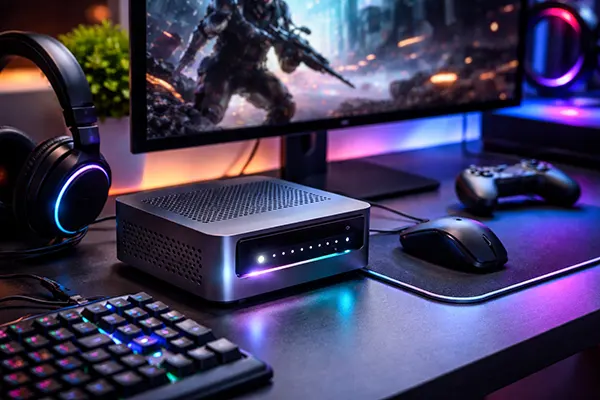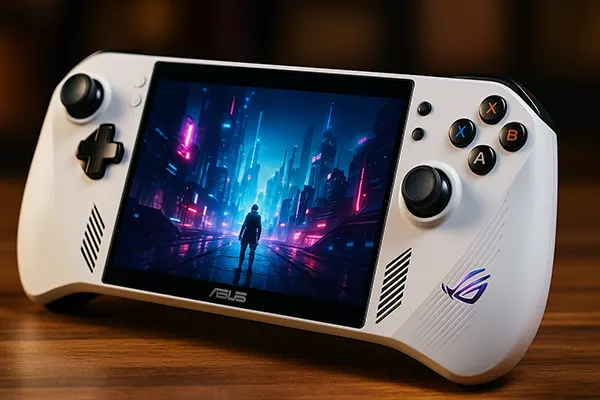
Hybrid Controllers and Adaptive Peripherals: When a Gamepad and a Mouse Become One Device
The border between console and PC control has never been thinner. In 2025, hybrid controllers and adaptive peripherals are redefining the way players interact with games, merging the precision of a mouse with the comfort of a traditional gamepad. These innovations are not simply accessories — they represent a shift toward unified, customisable input systems that respond to the user’s play style and accessibility needs.
Modern Hybrid Controllers: Combining Accuracy and Comfort
Manufacturers such as Razer, ASUS, and Logitech have introduced hybrid controllers capable of operating as both a standard pad and a pointing device. The Razer Hydra 2, for example, integrates a miniature optical sensor beneath one analogue stick, transforming it into a mouse-like input for first-person shooters. This approach provides the fine accuracy of PC gaming without abandoning ergonomic grips or trigger feedback.
Another notable design is the ASUS DualSense Pro Hybrid, launched in early 2025. It supports dual-mode connectivity — Bluetooth for consoles and low-latency 2.4 GHz for PCs — ensuring seamless transitions between platforms. Players can remap controls through built-in software, adjust dead zones, and fine-tune sensitivity profiles for specific titles.
What distinguishes these new devices is their hardware intelligence. Integrated motion sensors, adaptive triggers, and tactile micro-motors react dynamically to in-game physics, offering realistic feedback whether you are steering a car, drawing a bow, or controlling a drone in simulation titles.
From Innovation to Accessibility
The evolution of hybrid controllers is not only about performance but also inclusivity. Microsoft’s Adaptive Hub 2.0, released in 2025, supports plug-and-play modules such as foot pedals, pressure sensors, and voice triggers. This allows players with limited mobility to customise layouts for comfort and precision.
Developers are increasingly adopting open protocols, enabling independent creators to build peripheral add-ons. 3D-printed handles, magnetic button arrays, and switch extensions are now officially supported through open SDKs, making accessibility a design principle rather than an afterthought.
As a result, hybrid control ecosystems are transforming gaming into a more democratic space — where ergonomics and individual needs guide design, not merely competitive advantage.
Adaptive Peripherals for Every Genre
Different genres demand different control logics. In tactical shooters, players favour precise aiming and rapid input; in real-time strategies, cursor accuracy and macro execution are vital; while in RPGs, comfort and endurance take priority. Adaptive peripherals now recognise these needs automatically.
Logitech’s Adaptive TouchPad G25 merges a touch-surface with haptic feedback. It detects whether the user gestures, swipes, or clicks, switching between pointer and pad modes in milliseconds. For strategy games like “Age of Empires IV Remastered,” this means accurate cursor control without a separate mouse.
Meanwhile, SteelSeries’ OmniFlex Controller integrates pressure-sensitive triggers that adjust tension based on weapon type or terrain friction. This kind of context-aware hardware interaction personalises gameplay across genres, bridging gaps that once separated console and PC experiences.
Software Integration and Cloud Sync
Modern peripherals come with companion software that stores configurations in the cloud. Players using Xbox Cloud Gaming, GeForce NOW, or PlayStation Link can synchronise their control settings across devices. A player might start an RPG on console and continue on a laptop with identical button mapping and sensitivity.
This cloud synchronisation is particularly valuable in competitive environments, reducing setup time during tournaments and maintaining consistent performance across machines. It also enhances safety — encryption prevents unauthorised firmware modification or input injection.
Through cross-platform profiles, hybrid controllers are becoming a universal interface, effectively bridging different gaming ecosystems while preserving each player’s muscle memory and control preferences.

Modular and Shape-Shifting Designs
Physical modularity is a growing trend in 2025. Devices such as the Hori ModuPad and Sony’s Project Helix allow players to detach or reposition modules — swapping analogue sticks, replacing grips, or even converting halves of a controller into a split keyboard-mouse configuration.
This flexibility appeals not only to enthusiasts but also to professional players seeking the perfect balance between comfort and precision. The magnets and micro-locks used in these models ensure durability without compromising quick reconfiguration.
At the same time, eco-design principles are gaining relevance. Manufacturers increasingly use recyclable materials, replaceable batteries, and repair-friendly chassis, extending product lifespans and reducing electronic waste.
Unified Control for a Multi-Platform Future
As gaming continues its shift toward cloud and cross-device ecosystems, the concept of “one controller for all” becomes reality. Unified driver frameworks, such as Microsoft’s XInput 2.5 and Sony’s DualLink, are now compatible across PCs, consoles, and mobile systems.
This means a single adaptive peripheral can serve as the main interface for local and streamed gaming alike. Whether connected via USB-C or wireless low-latency protocols, latency differences are now negligible — under 2 ms in lab tests.
The next step will likely involve biometric calibration and AI-driven ergonomics, where controllers learn a user’s hand pressure, temperature, and reaction speed, adjusting form and resistance automatically. The hybrid era is no longer a concept; it’s the new standard of interaction.




